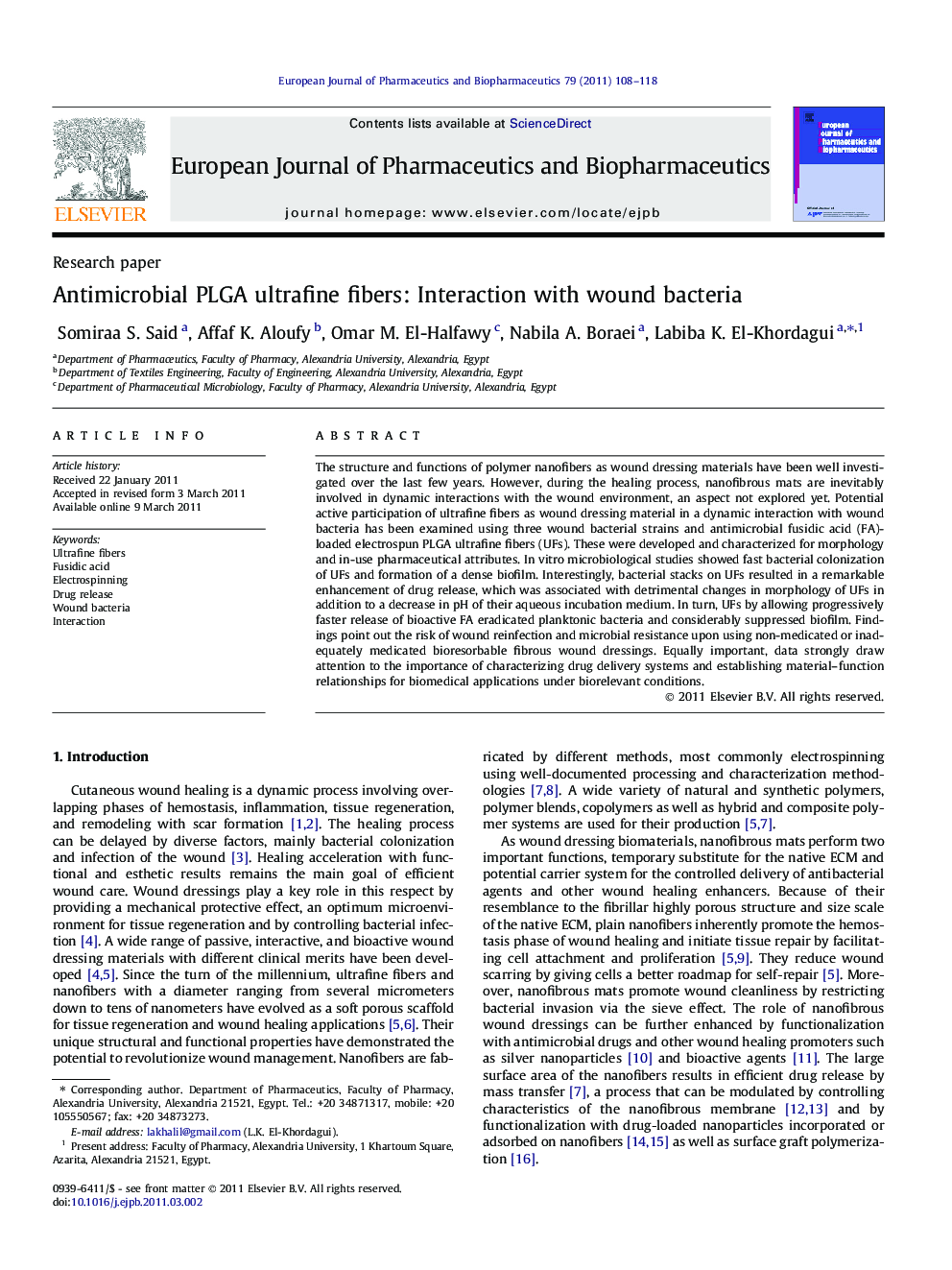| کد مقاله | کد نشریه | سال انتشار | مقاله انگلیسی | نسخه تمام متن |
|---|---|---|---|---|
| 2085445 | 1545367 | 2011 | 11 صفحه PDF | دانلود رایگان |

The structure and functions of polymer nanofibers as wound dressing materials have been well investigated over the last few years. However, during the healing process, nanofibrous mats are inevitably involved in dynamic interactions with the wound environment, an aspect not explored yet. Potential active participation of ultrafine fibers as wound dressing material in a dynamic interaction with wound bacteria has been examined using three wound bacterial strains and antimicrobial fusidic acid (FA)-loaded electrospun PLGA ultrafine fibers (UFs). These were developed and characterized for morphology and in-use pharmaceutical attributes. In vitro microbiological studies showed fast bacterial colonization of UFs and formation of a dense biofilm. Interestingly, bacterial stacks on UFs resulted in a remarkable enhancement of drug release, which was associated with detrimental changes in morphology of UFs in addition to a decrease in pH of their aqueous incubation medium. In turn, UFs by allowing progressively faster release of bioactive FA eradicated planktonic bacteria and considerably suppressed biofilm. Findings point out the risk of wound reinfection and microbial resistance upon using non-medicated or inadequately medicated bioresorbable fibrous wound dressings. Equally important, data strongly draw attention to the importance of characterizing drug delivery systems and establishing material–function relationships for biomedical applications under biorelevant conditions.
The dynamic interaction of antimicrobial-loaded ultrafine fibers with the wound milieu results in bacterial colonization and biofilm formation. This, in turn, affects the structural integrity of the fibers resulting in enhancement of the antimicrobial release, leading to drastic bacterial killing.Figure optionsDownload as PowerPoint slide
Journal: European Journal of Pharmaceutics and Biopharmaceutics - Volume 79, Issue 1, September 2011, Pages 108–118